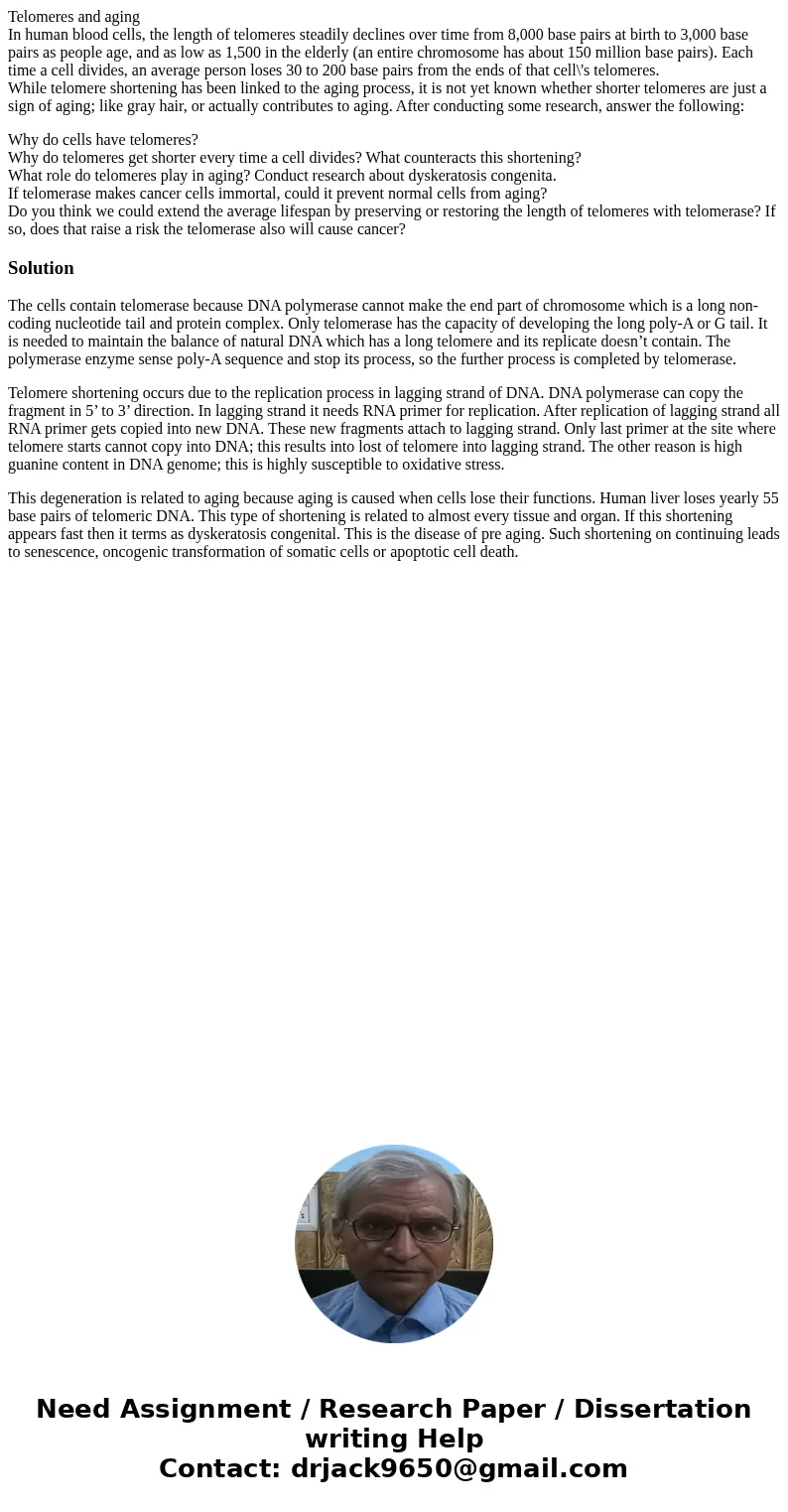Telomeres and aging In human blood cells the length of telom
Telomeres and aging
In human blood cells, the length of telomeres steadily declines over time from 8,000 base pairs at birth to 3,000 base pairs as people age, and as low as 1,500 in the elderly (an entire chromosome has about 150 million base pairs). Each time a cell divides, an average person loses 30 to 200 base pairs from the ends of that cell\'s telomeres.
While telomere shortening has been linked to the aging process, it is not yet known whether shorter telomeres are just a sign of aging; like gray hair, or actually contributes to aging. After conducting some research, answer the following:
Why do cells have telomeres?
Why do telomeres get shorter every time a cell divides? What counteracts this shortening?
What role do telomeres play in aging? Conduct research about dyskeratosis congenita.
If telomerase makes cancer cells immortal, could it prevent normal cells from aging?
Do you think we could extend the average lifespan by preserving or restoring the length of telomeres with telomerase? If so, does that raise a risk the telomerase also will cause cancer?
Solution
The cells contain telomerase because DNA polymerase cannot make the end part of chromosome which is a long non-coding nucleotide tail and protein complex. Only telomerase has the capacity of developing the long poly-A or G tail. It is needed to maintain the balance of natural DNA which has a long telomere and its replicate doesn’t contain. The polymerase enzyme sense poly-A sequence and stop its process, so the further process is completed by telomerase.
Telomere shortening occurs due to the replication process in lagging strand of DNA. DNA polymerase can copy the fragment in 5’ to 3’ direction. In lagging strand it needs RNA primer for replication. After replication of lagging strand all RNA primer gets copied into new DNA. These new fragments attach to lagging strand. Only last primer at the site where telomere starts cannot copy into DNA; this results into lost of telomere into lagging strand. The other reason is high guanine content in DNA genome; this is highly susceptible to oxidative stress.
This degeneration is related to aging because aging is caused when cells lose their functions. Human liver loses yearly 55 base pairs of telomeric DNA. This type of shortening is related to almost every tissue and organ. If this shortening appears fast then it terms as dyskeratosis congenital. This is the disease of pre aging. Such shortening on continuing leads to senescence, oncogenic transformation of somatic cells or apoptotic cell death.

 Homework Sourse
Homework Sourse